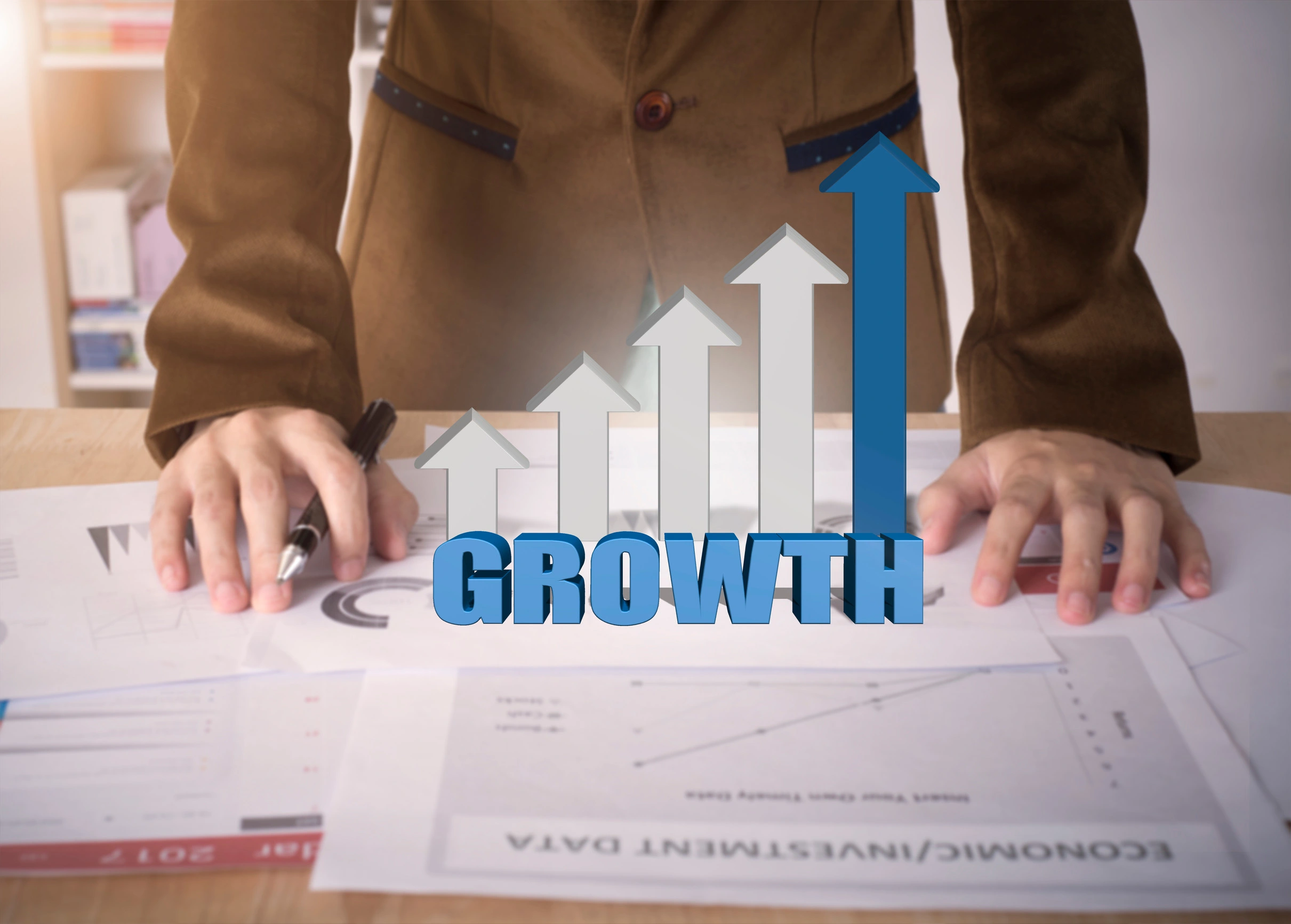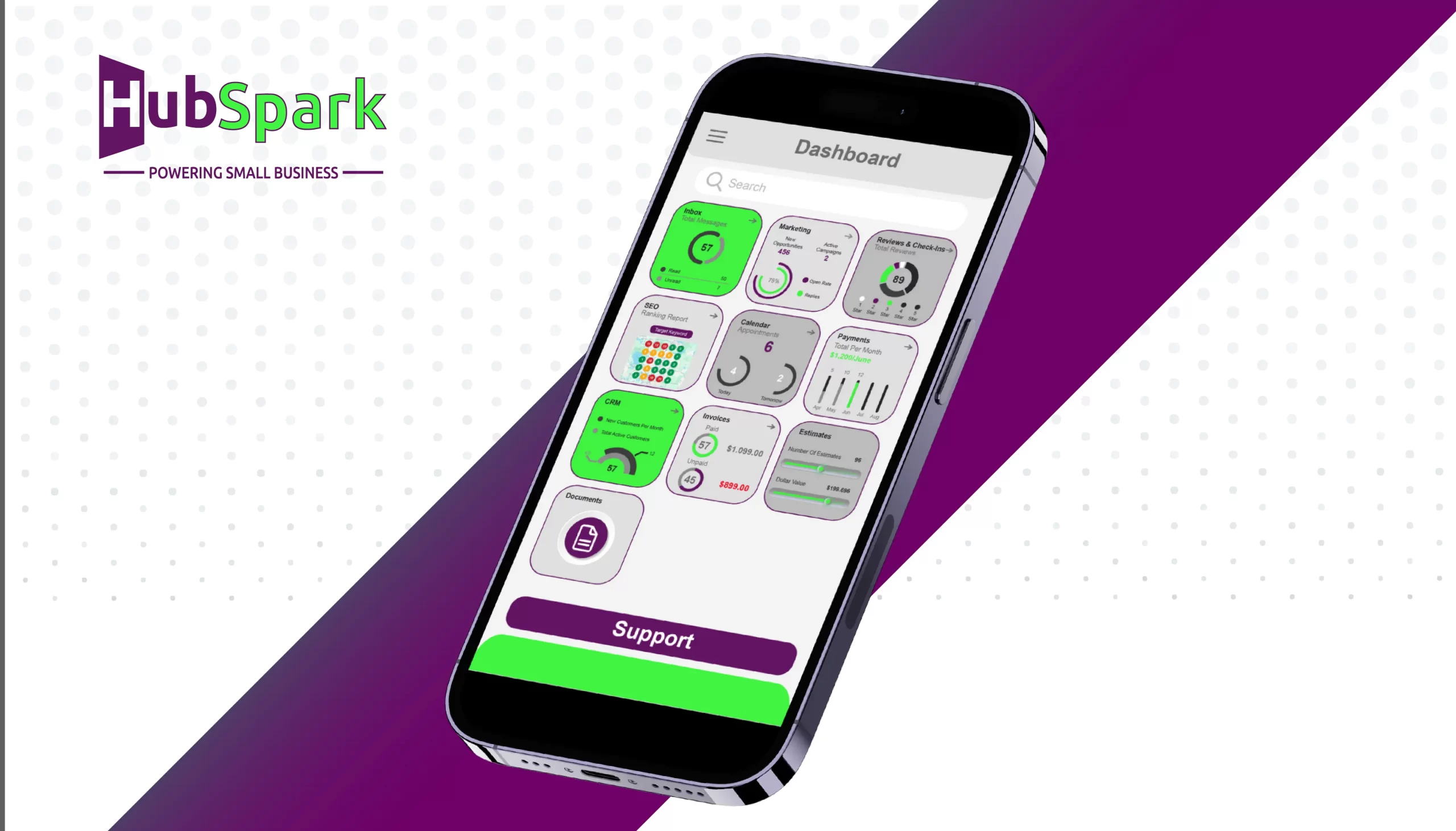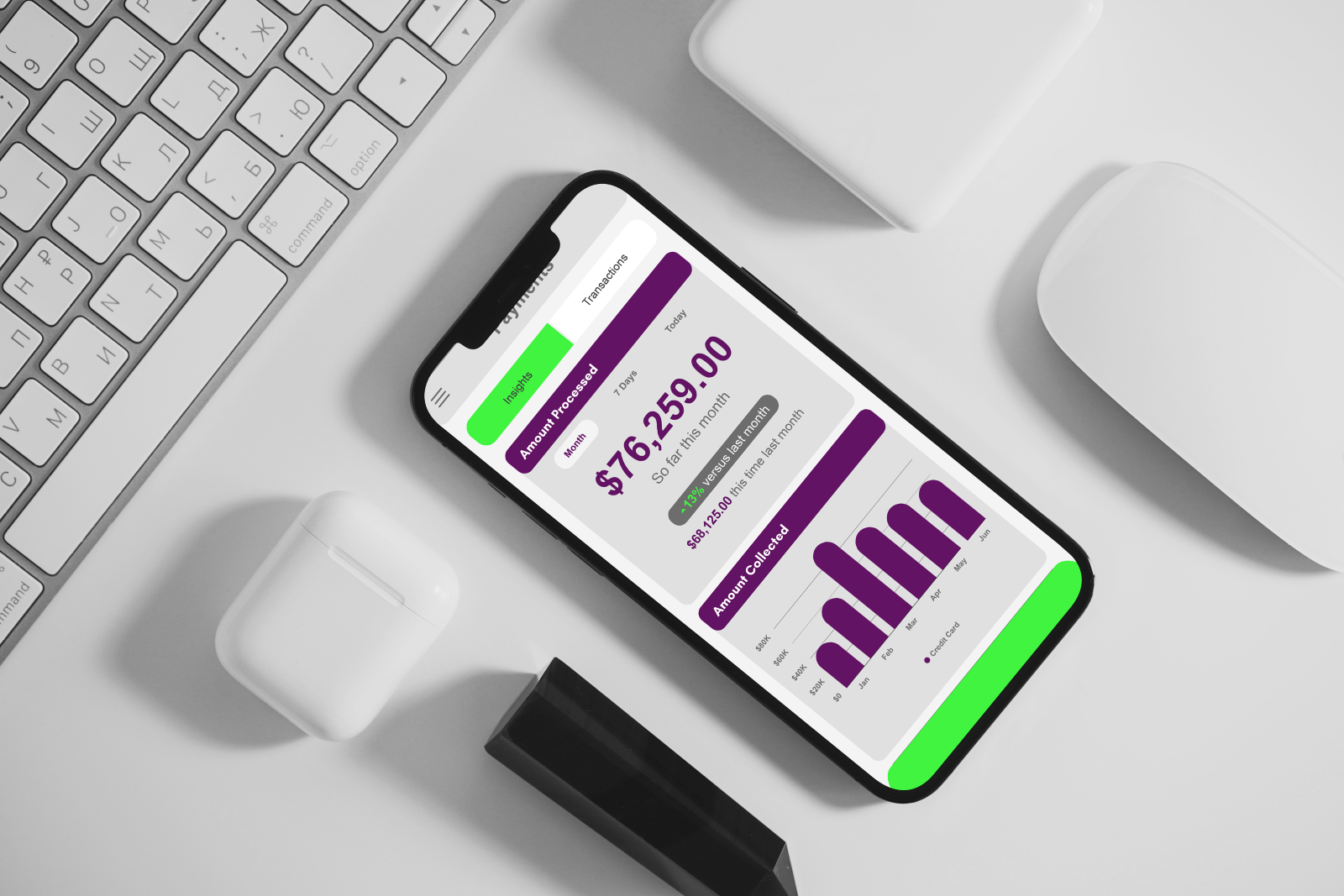Building a Scalable Business: Key Steps for Sustainable Growth
Key Takeaways
Launching a business is a significant challenge, but a far greater and more complex task is building that business to be truly scalable. Scalability is not simply about growth, but about creating systems, models, and strategies that enable your business to expand efficiently—handling increased demand, new markets, and organizational complexity without a proportional rise in costs or a decrease in quality. Building a scalable business requires long-term thinking, sound decision-making, and a willingness to adapt processes to meet future demands.
HubSpark can help your business scale and grow with helping you manage your most important business functions on autopilot.


Understanding Scalability: What It Means
Scalability refers to a business’s capacity to grow revenues or outputs while maintaining or improving margins and efficiency, rather than seeing costs rise in direct proportion to size or complexity. This is achieved by designing business models, technologies, and processes so they can handle increasing workloads or market demands with minimal friction and without excessive resource drain.
A scalable business is not just one that captures more customers, but one that does so while maintaining, or even improving, operational performance, customer experience, and profitability. A truly scalable model allows you to serve 10, 100, or 1,000 times more customers or clients with only a fraction more management, technology, or team intervention—enabling exponential growth.
Foundations of a Scalable Business Model
The foundation of scalability is baked into your business model from the very start. Businesses that are primed for scalability frequently share several key characteristics, including strong product-market fit, repeatable revenue models, and services or products that are not overly reliant on manual labor or one-off customization.
One central feature of a scalable model is the proportion of fixed to variable costs. Higher fixed costs (such as technology platforms or automated infrastructure) can allow more revenue to be generated without substantial new investments in resources for each additional customer. In contrast, models dependent on high variable costs for each sale—like bespoke consultancy services that can’t be productized—are much harder to scale.

Building Processes for Growth
As your business gains traction, it’s essential to codify and streamline your internal processes. Well-documented, repeatable processes not only reduce errors and inefficiencies as volume increases but also make onboarding and training new employees much easier and faster.
Clear processes allow a business to standardize core activities, control quality, and delegate tasks reliably. This foundation forms the basis for scaling headcount, customer volume, or geography without losing operational excellence.
Leveraging Technology and Automation
Strategically using technology is critical for achieving scalable operations. The right technologies remove bottlenecks, cut down on manual work, and create data-driven insights that improve efficiency and decision-making.
Automation can be applied across sales, customer service, finance, operations, and marketing—automating everything from lead generation and onboarding to invoicing, reporting, and customer engagement. Investing in flexible, cloud-based systems ensures your tools can grow with you, integrate with new platforms, and allow distributed teams to collaborate seamlessly.

Assembling the Right Team and Leadership
Scaling a business requires more than hiring additional employees; it involves building a team culture that can adapt to change, innovate at pace, and handle growing complexity with resilience. Effective leaders foster this culture by communicating a clear vision, empowering employees with training and development, and delegating responsibilities to capable managers as the organization evolves.
At each growth stage, reassess your leadership needs and organizational structure to ensure decision-making remains efficient and aligned with company goals.
Managing Resources and Financial Discipline
As your business aims to scale, resource management becomes even more critical. Rapid growth can strain cash flow, inventory, supply chains, and HR capacity, making careful forecasting and capital allocation essential.
Scalable businesses set robust financial KPIs, monitor burn rates, and have contingency plans for unexpected downturns or disruptions. Sustainable scaling requires balancing aggressive investment with prudent risk management.

Addressing the Barriers to Scaling
No scaling journey is without obstacles. Many businesses struggle to move beyond initial success due to bottlenecks such as lack of delegation, founder dependency, or reliance on legacy processes that can’t support larger customer bases.
Proactively identifying these barriers and replacing inefficient systems with scalable alternatives is essential to avoid stalling growth. Continually updating playbooks, implementing better technology, and decentralizing decision-making keeps your business agile enough to capture further opportunities.
Steps to Designing for Scalability
To help you structure your scaling plan, here are the main steps involved in designing for scalability.
- Clarifying Your Value Proposition: Make sure your core product or service solves a real, widely-felt problem and resonates at scale in your target market, as a generic or untested offering is unlikely to scale successfully.
- Standardizing Core Operations: Develop standard operating procedures for essential activities, ensuring tasks can be replicated easily by new hires and systematized as demand grows.
- Adopting Modular Technology: Choose technology solutions that can be expanded, integrated, or replaced modularly, so upgrades do not disrupt your core operations or require massive overhauls.
- Implementing Data-Driven Decision-Making: Build data tracking and reporting into every process so you can identify early signs of friction, opportunities, or emerging markets—empowering more informed, proactive leadership.
- Cultivating Strategic Partnerships: Form alliances with vendors, distribution partners, and platforms that can provide capacity, expertise, or reach you could not economically achieve alone, fueling non-linear growth.
- Preparing for Geographic and Market Expansion: Design your offerings and systems to accommodate localization, compliance, and support needs as you enter new markets or geographies.

Maintaining Customer Experience at Scale
A common pitfall in scaling is sacrificing the customer experience that fueled your early growth. As volume increases, businesses must reinforce customer care standards, gather feedback, and invest in tools—like CRM systems or self-service portals—that maintain personalized service at high scale.
Training programs, quality assurance checks, and ongoing process improvements are necessary to ensure your brand promise remains intact, regardless of business size.
Contact HubSpark Today to Learn More About How We can Help You Scale Your Business
Building a scalable business framework is a marathon, not a sprint. It hinges on making thoughtful investments in technology, people, and processes, and on continually evolving customer acquisition strategies as the business environment changes. The businesses that scale successfully are those that embed flexibility, resilience, and a commitment to excellence at their core—positioning themselves not just for rapid growth, but for enduring impact and profitability.
Contact us to learn more about how HubSpark can help you scale your business!

Frequently Asked Questions
A truly scalable business framework is one where increased revenue doesn’t require a corresponding increase in costs, headcount, or resources. Ask if your processes can handle 10x the demand with minimal restructuring and whether your customer acquisition strategy, technologies, supply chains, and teams can efficiently support your growth goals.
Early warning signs include customer complaints about delays, inability to fulfill orders on time, and increased errors or quality issues, which can hinder the scaling process and impact the business’s growth strategy.
Not all businesses are equally scalable; models reliant on custom, labor-intensive, or location-specific work face more constraints. However, many traditional businesses can enhance their scalability by introducing a scalable business framework through digital processes, licensing, or franchising, optimizing their service offerings for greater leverage of core capabilities.

Request a Free Demo
(no credit card required)

Launching a business is a significant challenge, but a far greater and more complex task is building that business to be truly scalable. Scalability is not simply about growth, but about creating systems, models, and strategies that enable your business to expand efficiently—handling increased demand, new markets, and organizational complexity without a proportional rise in costs or a decrease in quality. Building a scalable business requires long-term thinking, sound decision-making, and a willingness to adapt processes to meet future demands.
HubSpark can help your business scale and grow with helping you manage your most important business functions on autopilot.
Understanding Scalability: What It Means

Scalability refers to a business’s capacity to grow revenues or outputs while maintaining or improving margins and efficiency, rather than seeing costs rise in direct proportion to size or complexity. This is achieved by designing business models, technologies, and processes so they can handle increasing workloads or market demands with minimal friction and without excessive resource drain.
A scalable business is not just one that captures more customers, but one that does so while maintaining, or even improving, operational performance, customer experience, and profitability. A truly scalable model allows you to serve 10, 100, or 1,000 times more customers or clients with only a fraction more management, technology, or team intervention—enabling exponential growth.
Foundations of a Scalable Business Model

The foundation of scalability is baked into your business model from the very start. Businesses that are primed for scalability frequently share several key characteristics, including strong product-market fit, repeatable revenue models, and services or products that are not overly reliant on manual labor or one-off customization.
One central feature of a scalable model is the proportion of fixed to variable costs. Higher fixed costs (such as technology platforms or automated infrastructure) can allow more revenue to be generated without substantial new investments in resources for each additional customer. In contrast, models dependent on high variable costs for each sale—like bespoke consultancy services that can’t be productized—are much harder to scale.
Building Processes for Growth
As your business gains traction, it’s essential to codify and streamline your internal processes. Well-documented, repeatable processes not only reduce errors and inefficiencies as volume increases but also make onboarding and training new employees much easier and faster.
Clear processes allow a business to standardize core activities, control quality, and delegate tasks reliably. This foundation forms the basis for scaling headcount, customer volume, or geography without losing operational excellence.
Leveraging Technology and Automation
Strategically using technology is critical for achieving scalable operations. The right technologies remove bottlenecks, cut down on manual work, and create data-driven insights that improve efficiency and decision-making.
Automation can be applied across sales, customer service, finance, operations, and marketing—automating everything from lead generation and onboarding to invoicing, reporting, and customer engagement. Investing in flexible, cloud-based systems ensures your tools can grow with you, integrate with new platforms, and allow distributed teams to collaborate seamlessly.
Assembling the Right Team and Leadership

Scaling a business requires more than hiring additional employees; it involves building a team culture that can adapt to change, innovate at pace, and handle growing complexity with resilience. Effective leaders foster this culture by communicating a clear vision, empowering employees with training and development, and delegating responsibilities to capable managers as the organization evolves.
At each growth stage, reassess your leadership needs and organizational structure to ensure decision-making remains efficient and aligned with company goals.
Managing Resources and Financial Discipline

As your business aims to scale, resource management becomes even more critical. Rapid growth can strain cash flow, inventory, supply chains, and HR capacity, making careful forecasting and capital allocation essential.
Scalable businesses set robust financial KPIs, monitor burn rates, and have contingency plans for unexpected downturns or disruptions. Sustainable scaling requires balancing aggressive investment with prudent risk management.
Addressing the Barriers to Scaling
No scaling journey is without obstacles. Many businesses struggle to move beyond initial success due to bottlenecks such as lack of delegation, founder dependency, or reliance on legacy processes that can’t support larger customer bases.
Proactively identifying these barriers and replacing inefficient systems with scalable alternatives is essential to avoid stalling growth. Continually updating playbooks, implementing better technology, and decentralizing decision-making keeps your business agile enough to capture further opportunities.
Steps to Designing for Scalability
To help you structure your scaling plan, here are the main steps involved in designing for scalability.
- Clarifying Your Value Proposition: Make sure your core product or service solves a real, widely-felt problem and resonates at scale in your target market, as a generic or untested offering is unlikely to scale successfully.
- Standardizing Core Operations: Develop standard operating procedures for essential activities, ensuring tasks can be replicated easily by new hires and systematized as demand grows.
- Adopting Modular Technology: Choose technology solutions that can be expanded, integrated, or replaced modularly, so upgrades do not disrupt your core operations or require massive overhauls.
- Implementing Data-Driven Decision-Making: Build data tracking and reporting into every process so you can identify early signs of friction, opportunities, or emerging markets—empowering more informed, proactive leadership.
- Cultivating Strategic Partnerships: Form alliances with vendors, distribution partners, and platforms that can provide capacity, expertise, or reach you could not economically achieve alone, fueling non-linear growth.
- Preparing for Geographic and Market Expansion: Design your offerings and systems to accommodate localization, compliance, and support needs as you enter new markets or geographies.
Maintaining Customer Experience at Scale

A common pitfall in scaling is sacrificing the customer experience that fueled your early growth. As volume increases, businesses must reinforce customer care standards, gather feedback, and invest in tools—like CRM systems or self-service portals—that maintain personalized service at high scale.
Training programs, quality assurance checks, and ongoing process improvements are necessary to ensure your brand promise remains intact, regardless of business size.
Contact HubSpark Today to Learn More About How We can Help You Scale Your Business

Building a scalable business framework is a marathon, not a sprint. It hinges on making thoughtful investments in technology, people, and processes, and on continually evolving customer acquisition strategies as the business environment changes. The businesses that scale successfully are those that embed flexibility, resilience, and a commitment to excellence at their core—positioning themselves not just for rapid growth, but for enduring impact and profitability.
Contact us to learn more about how HubSpark can help you scale your business!
FAQ

1. How do I know if my business model is truly scalable?
A truly scalable business framework is one where increased revenue doesn’t require a corresponding increase in costs, headcount, or resources. Ask if your processes can handle 10x the demand with minimal restructuring and whether your customer acquisition strategy, technologies, supply chains, and teams can efficiently support your growth goals.
2. What are the first signs that my business is struggling to scale?
Early warning signs include customer complaints about delays, inability to fulfill orders on time, and increased errors or quality issues, which can hinder the scaling process and impact the business’s growth strategy.
3. Can any kind of business become scalable, or are there limits?
Not all businesses are equally scalable; models reliant on custom, labor-intensive, or location-specific work face more constraints. However, many traditional businesses can enhance their scalability by introducing a scalable business framework through digital processes, licensing, or franchising, optimizing their service offerings for greater leverage of core capabilities.

 Demo
Demo